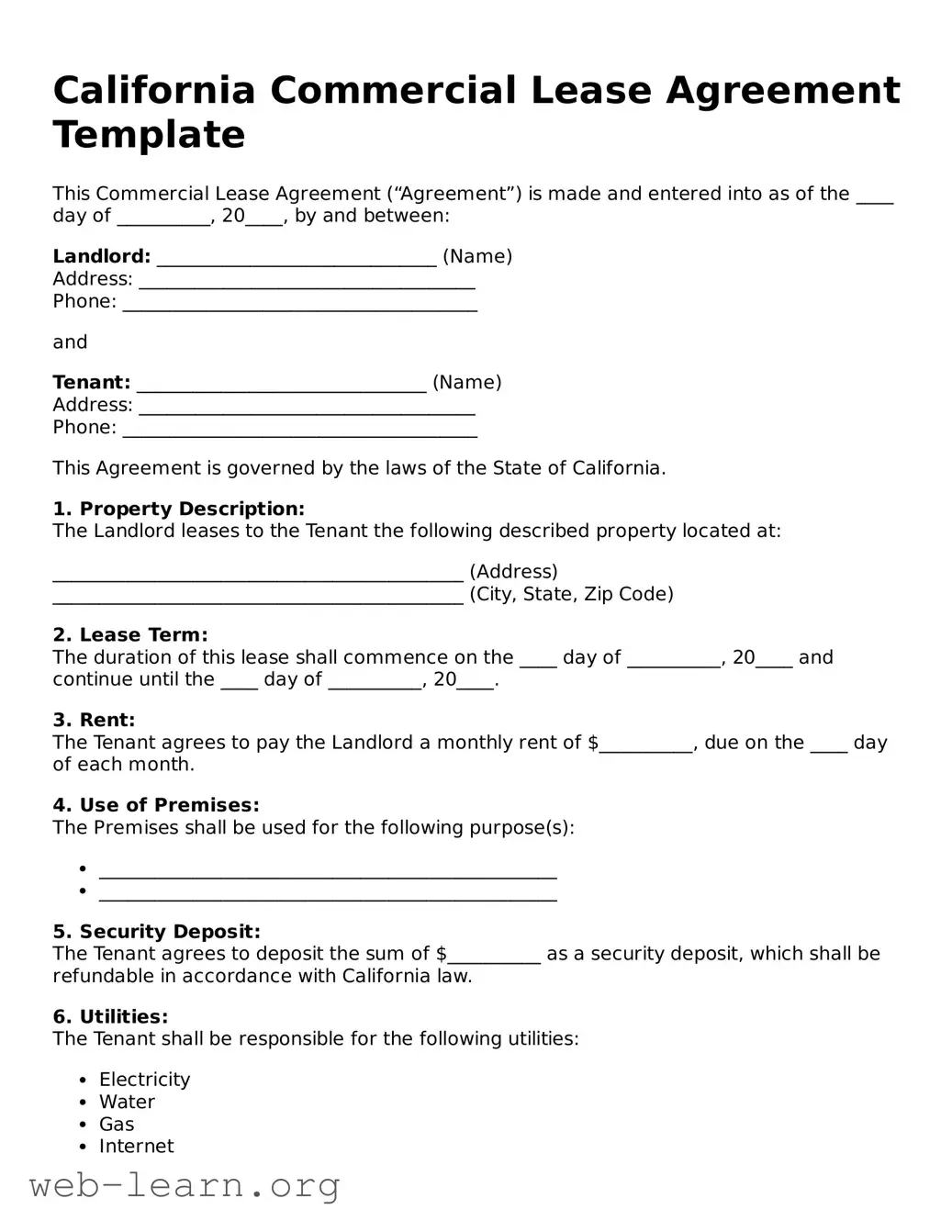California Commercial Lease Agreement Template
This Commercial Lease Agreement (“Agreement”) is made and entered into as of the ____ day of __________, 20____, by and between:
Landlord: ______________________________ (Name)
Address: ____________________________________
Phone: ______________________________________
and
Tenant: _______________________________ (Name)
Address: ____________________________________
Phone: ______________________________________
This Agreement is governed by the laws of the State of California.
1. Property Description:
The Landlord leases to the Tenant the following described property located at:
____________________________________________ (Address)
____________________________________________ (City, State, Zip Code)
2. Lease Term:
The duration of this lease shall commence on the ____ day of __________, 20____ and continue until the ____ day of __________, 20____.
3. Rent:
The Tenant agrees to pay the Landlord a monthly rent of $__________, due on the ____ day of each month.
4. Use of Premises:
The Premises shall be used for the following purpose(s):
- _________________________________________________
- _________________________________________________
5. Security Deposit:
The Tenant agrees to deposit the sum of $__________ as a security deposit, which shall be refundable in accordance with California law.
6. Utilities:
The Tenant shall be responsible for the following utilities:
- Electricity
- Water
- Gas
- Internet
7. Maintenance and Repairs:
The Tenant is responsible for maintaining the Premises in good condition, while the Landlord shall address structural repairs as required.
8. Termination:
Either party may terminate this lease by giving the other party a written notice at least thirty (30) days in advance.
9. Governing Law:
This Agreement shall be construed in accordance with the laws of the State of California.
IN WITNESS WHEREOF, the parties hereto have executed this Agreement as of the date first above written.
Landlord Signature: ________________________________
Date: ________________
Tenant Signature: ________________________________
Date: ________________
